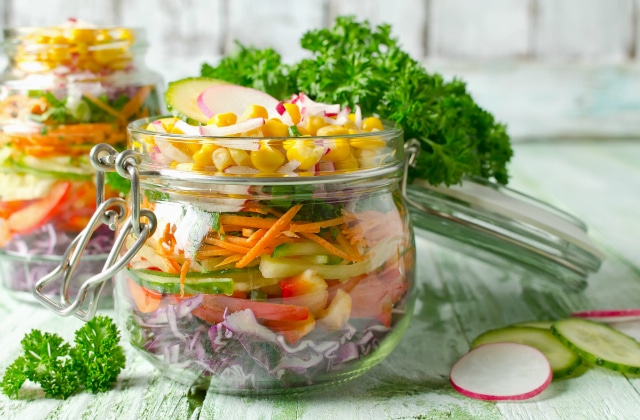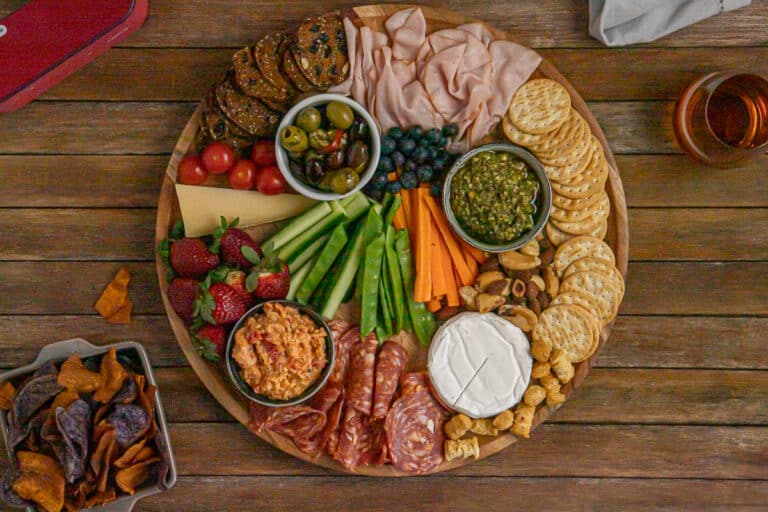Grocery Comparison Shopping Tips That Help Beat the Rising Cost of Living
This website may earn commissions from purchases made through links in this post.
With the cost of living going up, it’s even more important to shop savvy. Here are some grocery comparison shopping tips to help you save.

Rising food costs, housing costs, energy costs, fuel costs.
Everything is on the rise, except for wages. So we’re all looking for ways to reduce the cost of living.
I wish I could give you a Tik-Tok worth hack on how to save money, but the truth is, old-fashioned methods for keeping costs down are still relevant today because they work. The only difference is, there’s an app (or two) that makes it easier.
One underrated method for saving money (underrated because we often forget to do it or look for hot new hacks and tricks) is comparison shopping.
Pros and Cons of Comparison Shopping
The benefit of comparison shopping is that it will save you money. Up to 18% of your weekly shop, according to a QUT study.
While that’s a significant saving, there are some downsides.
The first is the time it takes to compare brands and especially compare different stores. While the internet has certainly made it easier, we’re all busy these days and don’t always have the extra time.
And if stores don’t have all their prices online, driving to different stores is not only a time-suck, it wastes petrol, defeating the purpose.
The other downside is that comparison shopping focuses exclusively on cost without accounting for quality. Also, you might prefer to buy things with less packaging, are ethically sourced, or are better for the environment. Making comparisons exclusively on cost won’t reflect this.
Get to Know What Different Shops Stock
Many stores that aren’t supermarkets sell ‘supermarket line items’.
For example, dishwashing detergent can be purchased at department stores like Big W, discount stores like the Reject Shop, chemists, office supplies stores, hardware stores, health food stores, and online retailers, to name a few.
While running around every store for every item is not practical, keeping an eye out for bargains beyond the supermarket and stocking up when you spot a great deal will save you money.
Discount stores can be a treasure trove of good bargains – it’s not all crappy imported plastic stuff.
The Reject Shop, for instance, currently stocks Sukin products at a fraction of the full-price supermarket counterparts. I buy the Sukin day cream – it’s normally $28 full price at the supermarket.

They got in touch to let me know some of their specials (not sponsored, no freebies or payments to me) because not everyone knows they stock grocery lines.
“We want to provide our customers with an extensive range of high-quality brands that are a favourite among Australians at a competitive price range. We pride ourselves on allowing Australians access to big-brand products that won’t leave a dent in their budget. We found that many customers are simply unaware of the range of products the Reject Shop offers – so our top tip is that it pays to compare.”
Where I live, they are next door to Coles, so I often pop in to check for specials. It’s our first stop if we need to buy travel snacks, but I usually pick up a few grocery items as well.
They also have a great price on Morning Fresh dishwashing liquid, but last week it was half-price at Big W, making it cheaper, which is why it pays to shop around.
Apps and Tools
With online tools and apps, comparison shopping has never been easier. You can save a load of time and still get the best deals available.
That means you don’t have to run around town comparing prices between retailers; you can do it on your phone in bed!
Each store’s online shop or app is the first stop for comparing prices. Woolworths and Coles have all their goods and prices online, making it easy to compare brands and stores.
Larger discount stores like Big W, The Reject Shop, and chemists also have their prices online.
Don’t forget to see if your local greengrocer, butcher, and health food store have websites where they post prices or specials (check their social media accounts too).
For stores that don’t have an online version (like Aldi), you can get an idea of the best specials from their catalogues.
Apps/websites that allow you to keep up with the latest store catalogues include:
Unit Pricing – The Key to Comparison Shopping
A study by QUT on comparison shopping showed that participants saved up to 18% on their weekly grocery bill by using the unit price to compare items and get the best value for money.
If you’re looking to save money, comparing the unit price to get the best value for money is one of the best tricks in the book.
We already know this, but the research shows we don’t do it. Habituation means we stop noticing the unit price, and buying the specials is easier than running calculations every time we shop.
While most supermarkets display the unit price on the label, here’s a refresher on calculating it yourself.
How to Calculate Unit Price
Grocery stores have gotten better at standardising unit pricing. However, it can still be confusing sometimes, and smaller stores aren’t legally obliged to display unit pricing, so it’s good to know how to calculate it yourself.
To calculate the unit price, divide the total price by the quantity/weight/volume to find the unit price:
Total price / quality = Unit Price
For example, a 375g packet of peanuts for $2.30 equals $0.00613 per gram.
Most shops display unit prices in 100g lots or 1 kilogram lots, so to get the cost per 100g, multiply the per gram amount by 100.
For example, $0.00613 x 100 = $0.61 cents per 100 grams.
To get the kilogram unit price, multiply the per gram amount by 1000.
For example, $0.00614 x 1000 = $6.13 per 1 kilo.
Here’s an example of why it’s good to know how to calculate unit prices yourself. The Woolworths online store displays the unit price for every laundry powder per kilo, except for the home brand.
Here’s a comparison between the half-price special and the home brand.
Is Bulk Buying Really Better?
You can usually save money by buying in bulk.
And the only way you can tell whether a bulk purchase is value for money is by comparing the unit price.
There are times when buying in bulk won’t save you money.
If the smaller size is on sale, but the bulk buy isn’t, and therefore the unit price is lower for the smaller item, you will save money by stocking up on the smaller size.
Or if the home brand version is still cheaper per unit than a brand name bulk version, then the home brand will be the better deal.
Finally, if you can’t use the bulk buy before the used-by date, in other words, if you end up wasting part of it, then the size you don’t waste will be the better deal.
Other Things to Compare Unit Pricing
Apart from comparing the price of different brands and the prices in other stores, you can save money by comparing:
- Packaged v loose items; for example, packaged chicken drumsticks v loose ones sold in the deli.
- Specials and sale items
- Frozen v fresh v canned items
- Convenience v regular items. For example, pre-grated cheese v block cheese.
- Bulk v smaller items.
Include Shipping, Driving Costs, Time and Effort
Before they built the new Aldi, I could walk to Woolworths but had to drive to Aldi.
One day, after driving there, negotiating a car spot in a crowded carpark, and negotiating the crowded store, my husband asked the question, how much did we actually save?
I only bought a few things; it might have been different if I’d done a full shop. But after comparing the price to the home brand items we usually buy at Woolworths, I saved a grand total of 64 cents.
Definitely not worth the petrol or stress.
When comparison shopping, it pays to account for petrol costs, time, and, if shopping online, delivery costs.
Test Before Switching
What if there’s a great deal on a different brand, but you’re not sure you will like it?
Stocking up to save money will be a waste if you don’t use it.
We buy many home-brand items, but I don’t like the taste of home-brand mustard. So despite it being cheaper, we don’t buy it.
So it pays to buy a little bit of something (if you can) to test it before stocking up.
If you’re trying to save money on groceries and mitigate the rising cost of living, paying attention to unit pricing and comparison shopping is one crucial tool in your toolbox. It’s not the only one, but it can make a big difference to the total on the receipt.









You can add 1001catalogues.com, it has cleaner and useful interface